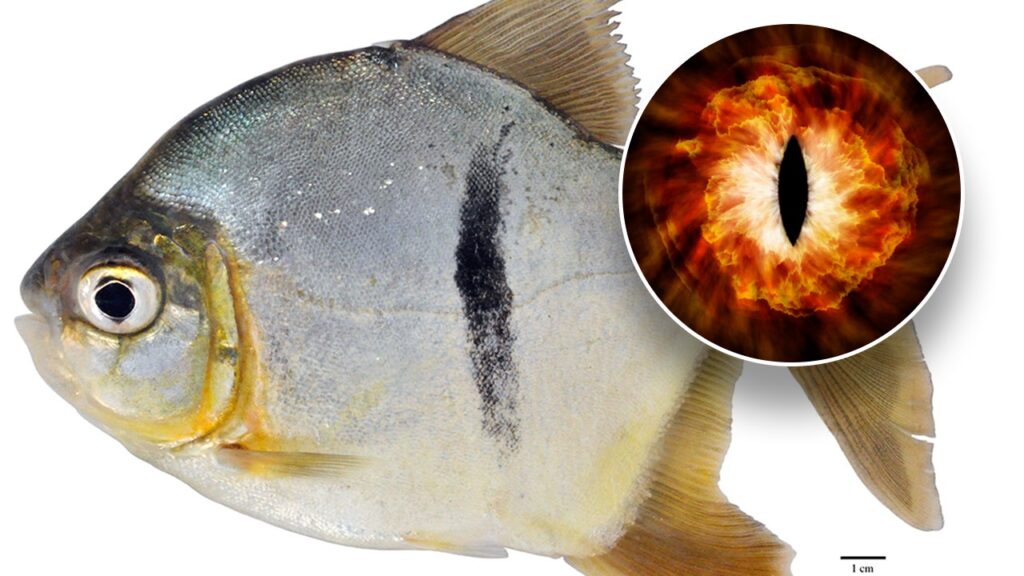A new fish species has emerged in the Amazon River, surprising researchers and captivating viewers with its peculiar characteristics. Named the Myloplus sauron, this fish has markings on its body that closely resemble the Eye of Sauron from J.R.R. Tolkien’s “The Lord of the Rings.” Despite its menacing appearance, the Myloplus sauron is a pacu, a relative of piranhas known for its herbivorous diet and human-like teeth.
The discovery of the Myloplus sauron was part of a broader effort to better understand the relationships between pacus and piranhas in the Amazon River basin. This elusive species was identified by a group of ichthyologists led by Valéria N. Machado at the Universidade Federal do Amazonas. Through genetic and morphological analyses, researchers were able to distinguish the Myloplus sauron from other pacu species, including Myloplus aylan.
The distinct markings on the Myloplus sauron, including a large black band on its body, make it stand out from other pacus. Researchers were struck by the similarity between the fish’s appearance and the iconic Eye of Sauron, leading to the fish’s evocative name. The orange-yellow patches on its body further contribute to its striking resemblance to the fiery eye of Tolkien’s antagonist.
The discovery of the Myloplus sauron highlights the importance of understanding and preserving the biodiversity of the Amazon River basin. As a rheophilic fish, the Myloplus sauron inhabits large rivers near waterfalls, making it particularly vulnerable to habitat alterations caused by human activities such as dam construction and hydroelectricity. The construction of the Belo Monte hydroelectric plant, for example, has led to changes in the flow of the Xingu River, impacting the habitats of species like the Myloplus sauron.
Despite its intimidating appearance, the Myloplus sauron serves as a reminder of the rich diversity of life in the Amazon River basin. As researchers continue to study and document new species like the Myloplus sauron, they gain a deeper understanding of the complex relationships that exist within this unique ecosystem. By recognizing and protecting these species, we can ensure the continued survival of these remarkable creatures for future generations to appreciate and enjoy.
In conclusion, the discovery of the Myloplus sauron underscores the importance of conservation efforts in the Amazon River basin. By studying and documenting new species like the Myloplus sauron, researchers contribute to our understanding of the rich biodiversity of this region. With continued efforts to protect and preserve the habitats of these species, we can ensure a sustainable future for the diverse array of life that calls the Amazon River basin home.












